The miniature dachshund is the smaller variety of the standard dachshund breed. Although petite and cute, this dachshund variety is hyper-energetic and can be a quite challenging dog to handle.
Miniature dachshunds are also curious and intelligent, requiring lots of attention just like their regular dachshund relatives.
Do you own a miniature dachshund and would like to learn more about these mini weiner dogs with beautiful, puppy dog eyes?
Or you are merely considering getting one of these sausage dogs and would love to be educated beforehand about what to expect from this dog breed?
In this complete guide about miniature dachshunds, you’ll learn all the facts about these fascinating dogs.
We will talk in detail about their origin, temperament, coat colours, care requirements, and even name a few famous people who adore these dogs.
Where do Miniature dachshunds come from?

What we see as a miniature dachshund breed today can be considered to have originated in Europe. After the standard sized dachshunds were transported to America, hunters were at a loss with European hares.
Although dachshunds were built to be warriors to corner badgers, they were also useful in chasing European hares.
These animals were way smaller than badgers and lived in smaller burrows. Therefore, there was a need for a smaller sized dog to hunt down these hares.
Initially, hunters used the smallest dachshund in the litter to achieve that aim. However, these weren’t efficient enough as they would have been better off with stumpy legs and long, pipe-like bodies.
As a result, the breeders invented the first generation of miniature dachshunds by crossing the standard breed with pinschers and toy terriers.
Remarkably, the mini dachshunds produced using this crossbreeding style lacked all the qualities of the original dachshund, especially the hunting prowess and alertness qualities.
This problem led the breeders to settle on using a much longer process in achieving a shorter, long-bodied Weiner.
Up to the present time, this process is known as selective breeding. In case with weiner dogs, the breeders’ goal was to make the dachshund shorter with each generation. For miniature dachshunds, the selective breeding began since 1910.
Miniature Dachshund Sizes
In most countries like Great Britain and America, plus several other Anglophone nations, there is only one particular size of a miniature dachshund.
However, in countries that are members of the World Canine Association such as Germany, they have two sizes of miniature dachshunds. One is called the rabbit or Kaninchen, while the other is called Zwerg.
Zwerg
The full name for a Zwerg is ‘Zwergpinscher’ and they were initially bred in Germany for hunting rats. A Zwerg is also called a Min Pin (Miniature Pinscher) and Zwerg in German means’ dwarf’. This breed of the pinscher ancestry has a hand in what we call miniature dachshunds today.
Kaninchen
Kaninchen is a German word depicting ‘rabbit.’ In some countries that are members of the American Kennel Club, the Kaninchen is not a recognised member of the dachshund breed.
The rabbit dachshund typically weighs less than 8lbs at a year and six months old and has a chest circumference of about 12 inches or less. These rabbit dachshunds are small enough to hunt a rabbit down into its burrow.
Toy Dogs
This a new trendy name for miniature breeds of dachshunds. Toy Dachshunds are sometimes viewed as rabbit dachshunds because of their smallness; however, they are unrecognised by most canine registries in the world.
They are mostly bred to be designer dogs and for pet purposes probably because of their novelty.
According to the World Canine Association, the main difference between the Zwerg and Kaninchen isn’t their weight but chest circumference.
What are the most common miniature dachshund colours?
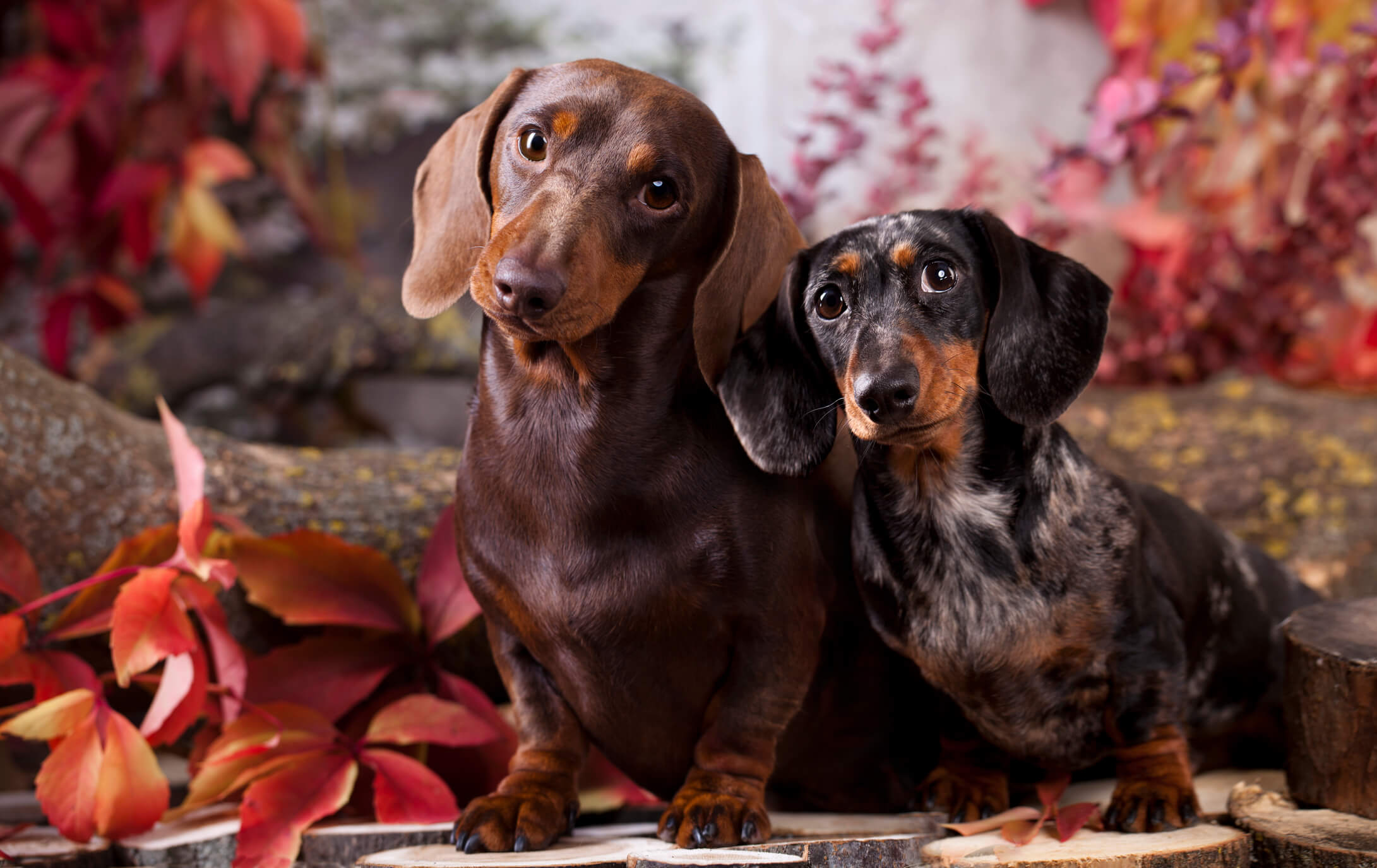
A Standard Brown dachshund and a Miniature Dapple dachshund
There are a lot of fascinating things about a mini dachshund – its size, temperament, courage and of course its colours!
The miniature dachshunds are indeed some of the cutest-coloured dogs you will ever see in a lifetime. For this reason most people cannot reserve their weakness for this breed.
Miniature Dachshund Colours
So what are the most common colours of this breed of dog?
According to the colours registered by the AKC (American Kennel Club), here are few registered mini dachshund colours:
Red
Red dachshunds can be anything from a light strawberry brown to a deep reddish-brown colour.
Black and Tan
A mixture of black and tan dachshund is more common than an all-black dachshund. The colour on its own is sometimes regarded as brown or red. Being conversant with the difference is vital. The tan colours are usually light tan (brown) and a deeper tan (reddish-brown).
Cream
Miniature dachshunds mostly come in cream colours, especially those of the long-haired breed. The buttery or ivory colour can be hardly mistaken as it barely has any variance. Cream dachshunds are considered to be ones of the rarest and most desirable dachshund varieties.
Chocolate
A dachshund chocolate colour is indeed one of the loveliest colours you will see. However, people don’t seem to understand the difference between this colour and the traditional red-coated or tan doxie. How much do you like chocolate bars? Chocolate coloured dachshunds look exactly like chocolate bars!
However, to get a dachshund that is purely chocolaty in colour is rare. They are mostly mixed with cream or tan hue.
Blue
Miniature dachshund colours that we regard as blue isn’t really blue but a colour that was diluted from the black doxie.
A steel grey/blue or grey/lavender tone is the best way to look at the colour of a blue dachshund.
Isabella or Fawn
This colour is a mixture of chocolate and brown with a slightly lighter tone. This colour often gives off a silvery blue or silvery grey or even silver and tan shade.
Miniature Dachshund Colour Combinations
Miniature dachshunds also come in a variety of colour combinations. These combinations consist of two colours, base colour, and a ‘colour point.’
The main colour is usually the one that covers the body and head.
On the other side, the colour point often appears on either side of the muzzle, the paws, and the throat and over his eyes.
We have made a list of some of the most common colour combinations (note that they are not the only possible ones though).
- Black and tan
- Blue and tan
- Chocolate and cream and
- Isabella and tan
Of all markings and colours, one of the rarest is white. In the AKC shows, white miniature dachshunds are seen as ineligible for competition because of hereditary health problems.
Miniature Dachshund Colour Patterns
Apart from colours and colour combinations, miniature dachshunds can come in several patterns. They are listed below.
Miniature dachshund temperament
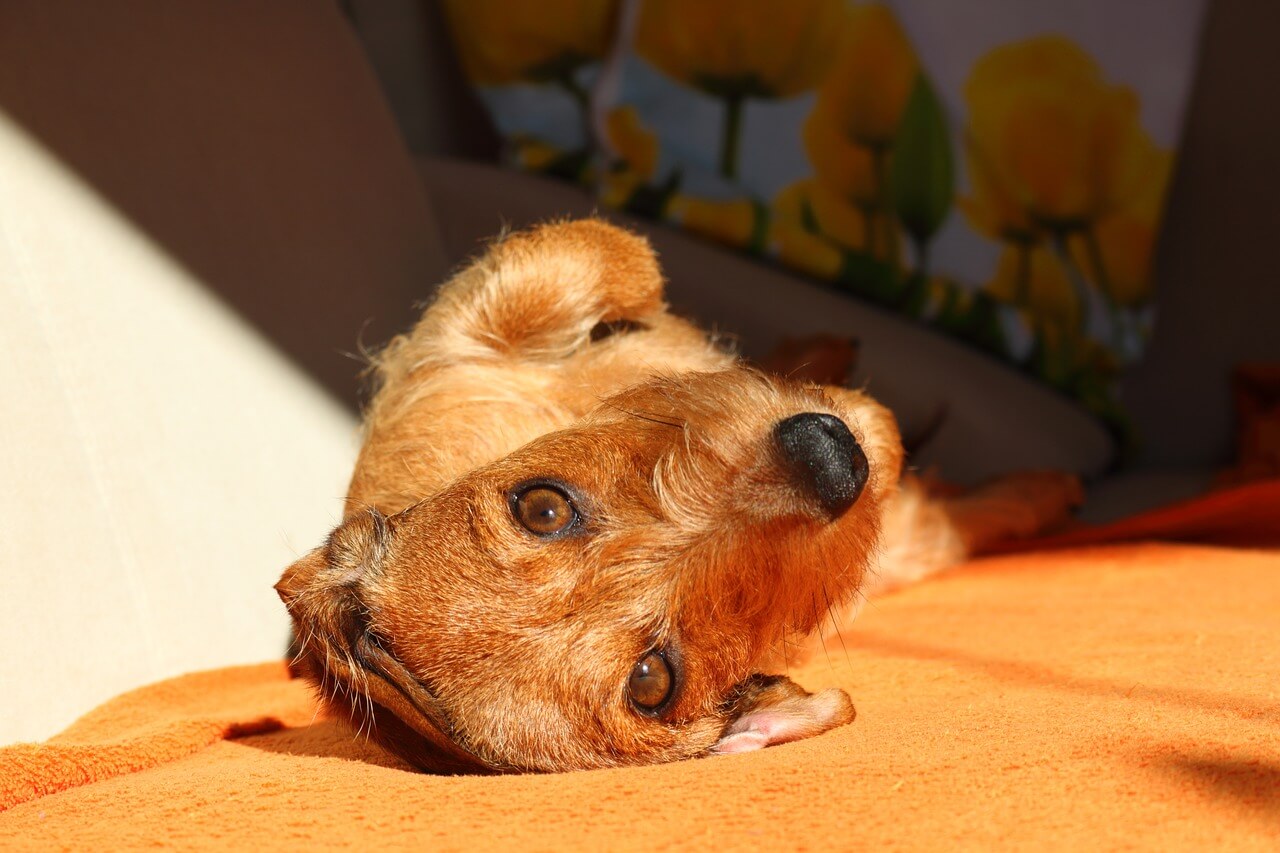
There is little not to love about your miniature dachshund’s temperament. In a word, your sausage dog can have any personality: funny, stubborn, independent, aggressive, or mischievous. It depends on how your doxie was trained, plus some of its inherent traits that pop up occasionally.
Stubborn
Statistically, miniature dachshunds are the hardest dogs to groom. Apparently, their instincts play a huge role in the decision-making process.
Miniature dachshunds are bred to chase down animals like foxes and hares. Therefore, they have to be ruthless and alert by nature.
This temperament often comes alive in them even when you’re giving instructions. Not like it doesn’t know you’re the boss, however, miniature dachshunds like to call the shots and hence clash with your authority. Extreme stubbornness!
Aggressive
The aggressiveness of most dogs can be traced to their training and the type of owners. However, the same cannot be said of miniature dachshunds.
These short-legged fellas would bark at anything they perceive as strange. Be it a car honking in the distance, a stranger at the door or even the sound of other dogs playing outside.
Courageous
If you have a mini dachshund, this is one temperament you would be grateful for – its courage!
A miniature dachshund doesn’t care how big its opponent or an intruder is. They were bred originally to attack, and those traits are still very much pinned in their genes. They are ready to fight to the death.
Attachement tendency
Sausage dogs easily get attached to their owners despite their stubbornness. No wonder they are often prescribed as therapy dogs or for families that have time on their hands to care for the dog.
Miniature dachshund often wants attention. When they are not given enough of it, they get lonely and start exhibiting signs like wailing and barking unnecessarily.
Loyal
Plus, when your miniature dachshund must have been trained to accept the fact that you’re its boss, it becomes so loyal and follows you almost everywhere.
It will readily come to your rescue if it sees you with a stranger or perceives that you’re under attack (which might likely not be the case. LOL).
Funny and Playful
Miniature dachshunds are funny and playful dog breeds. They find a way to joke with everything. While you’re mopping the floor, your dog might just come and grab the mop and start messing around with it.
Have you ever caught your dog doing something terrible and see its eyes as it fakes guilt? It’s something to laugh at.
Intelligent
A miniature dachshund is one of the smartest dog breeds you would come across. They take instructions from you not because they need it, but because they believe you’re the boss and trust your judgment. However, when they are not okay with it, they won’t respond.
The best way to help your dachshund live longer?
Watch our video to find out!
Famous owners of miniature dachshunds
You’re not the only one that likes or is looking to own a miniature dachshund. The size of these lapdogs plus their unusual look makes people want them as a pet.
Wieners are so small and can be carried anywhere and at any time, probably the reason why celebrities have favoured this breed.
Here is a list of some famous people who have a weak spot for who have miniature dachshunds.
Andy Warhol
Andy was very fond of his Weiner named Archie. He could be seen cuddling up with the dachshund at his free times. According to him, “sometimes wieners could be regarded as the best muses.”
Cole Porter
American songwriter and composer, Cole Porter always had his ways of stealing the show with his lyrics and strong performance.
However, his mini doxie named Jezebel was always there to take the shine from him. The singer had a soft spot for his cute miniature dachshund which he never seemed to get enough of.
John Wayne
John Wayne was always ready to show off his miniature dachshund, called Blackie, to anyone who cared to see.
He was so fond of this dog that they often took naps together as he treated it like a real child. On one occasion, Blackie was caught napping away in John’s arms.
John had a famous line about Blackie. He said, “My doxie is so huge. I don’t think this town is big enough for the two of us!”
Joan Crawford
The once ‘chorus girl’ on Broadway soon grew into a big American actress with as much love for acting as she has for her two dachshunds, Baby and Boopshem.
She said her wieners couldn’t get enough of her and one of their best activities was rushing down the bathtub to lick off any water left on her face as she bathes.
Brooke Astor
New York City socialite, Brooke Astor couldn’t help but express her love for wieners. Her doxie, Boysie, got more than enough love and care from the kindhearted owner.
It enjoyed being dressed in several outfits too. Brooke says wieners always look good, no matter the outfit they are wearing.
Miniature dachshund health issues
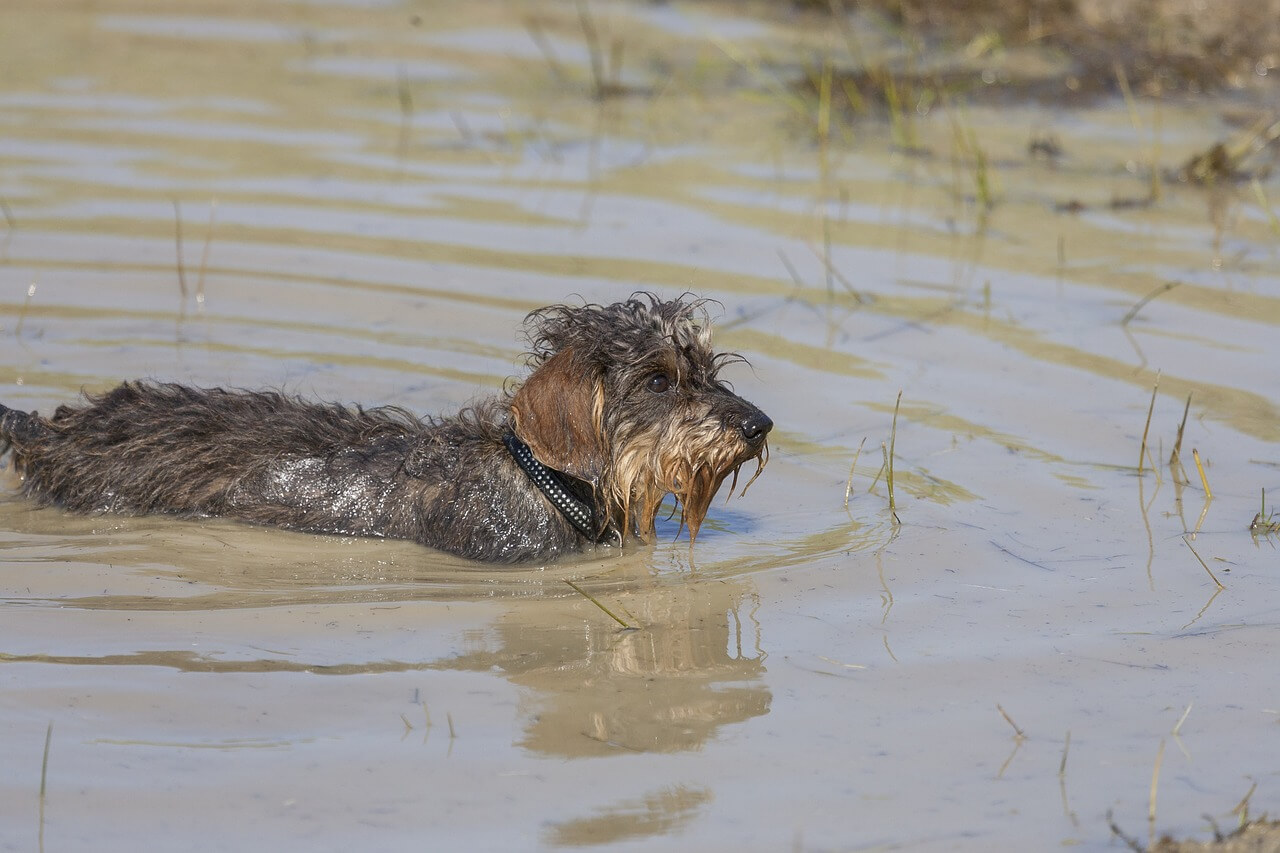
Your mini dachshund’s body might be unique, but its elongated structure and stumpy legs might just be the culprit to certain illnesses that the dog suffers.
Miniature dachshunds have a high risk of suffering specific health conditions which might be preventable by the constant observance of your dog’s health condition.
Here are a few diseases your miniature dachshund can suffer or has a high risk of suffering.
UTI (Urinary Tract Infection)
Urinary tract infection often affects miniature dachshunds. Symptoms are when your dog pees too often or when he has frequent accidents, even housebroken dogs.
Sometimes, they become restless like they need to use the bathroom, but when there, they often pass too few urines. Other times, your pet might just be having difficulty in passing urine.
Urinary tract infection is often caused by malaria, and when you notice any of the symptoms, you should contact your veterinarian immediately.
IVDD
IVDD stands for intervertebral disk disease and is a condition that affects your miniature dachshund’s back and neck.
The skeletal structure of your doxie makes it prone to the slipped disk. Doxies are also susceptible to other issues such as the liver and joint problems.
It is crucial to stop your doxie from engaging in activities that put much stress on its backline and spine.
Activities like running up and down a flight of stairs often, jumping especially on and off a sofa, exercising for too long and many more can put much pressure on your dog’s back and must be avoided.
Weight issues
Miniature dachshunds are prone to gaining too much weight – Obesity.
When your dog becomes obese, there is a higher risk of intervertebral disk disease from the increased weight on your doxie’s back and joints. Obesity opens your dachshund up to other illnesses like heart diseases and even diabetes.
A condition caused by thyroid disorder could also affect your dog, and it often feels like obesity. With this condition, even a regulated diet and exercises can’t slow down your dog’s weight gain. Sometimes the condition might lead to lethargy or infections in your pet.
It is important to pay attention to your dog’s weight gain and ensure it eats the proper diet and does adequate exercises to regulate its weight.
Eye problems
Dachshunds tend to possess a higher risk of suffering several eye issues that affect most dog breeds.
Eye issues like glaucoma and cataract can be disastrous and often lead to canine blindness.
The worst part of this case is that these issues are incurable yet and the best you can do for your dog is help it avoid such disease.
There are certain foods that your dog should eat as they help in sharpening and strengthening the dachshund’s retina and eye lenses, guaranteeing lasting eye health.
If you want to find out more about eye issues in doxies, feel free to read our article “Dachshund eye problems”.
Hip Dysplasia
Hip dysplasia is a condition where the dog’s hip bone doesn’t fit into the socket. This condition leads to lameness in the hind legs of the animal.
Sometimes the animal might experience difficulty in walking steadily or getting up once it sits down.
The surest way to avoid this problem is to feed your dog with nutritious meals that provide all the protein and calcium it needs.
Also discouraging your pet from strenuous exercises like jumping and running long distances can work in reducing the chances of suffering hip dysplasia.
Patella Luxation
Your dog can also suffer joint issues known as patella luxation. It is a condition where your dog’s kneecap forcefully comes off its groove. The risk of this condition is heightened by the short legs of the dachshund, making its knee to be in a different angle.
Watching your dog’s weight and keeping it from strenuous exercises can help prevent this condition from occurring.
Miniature dachshund training basics
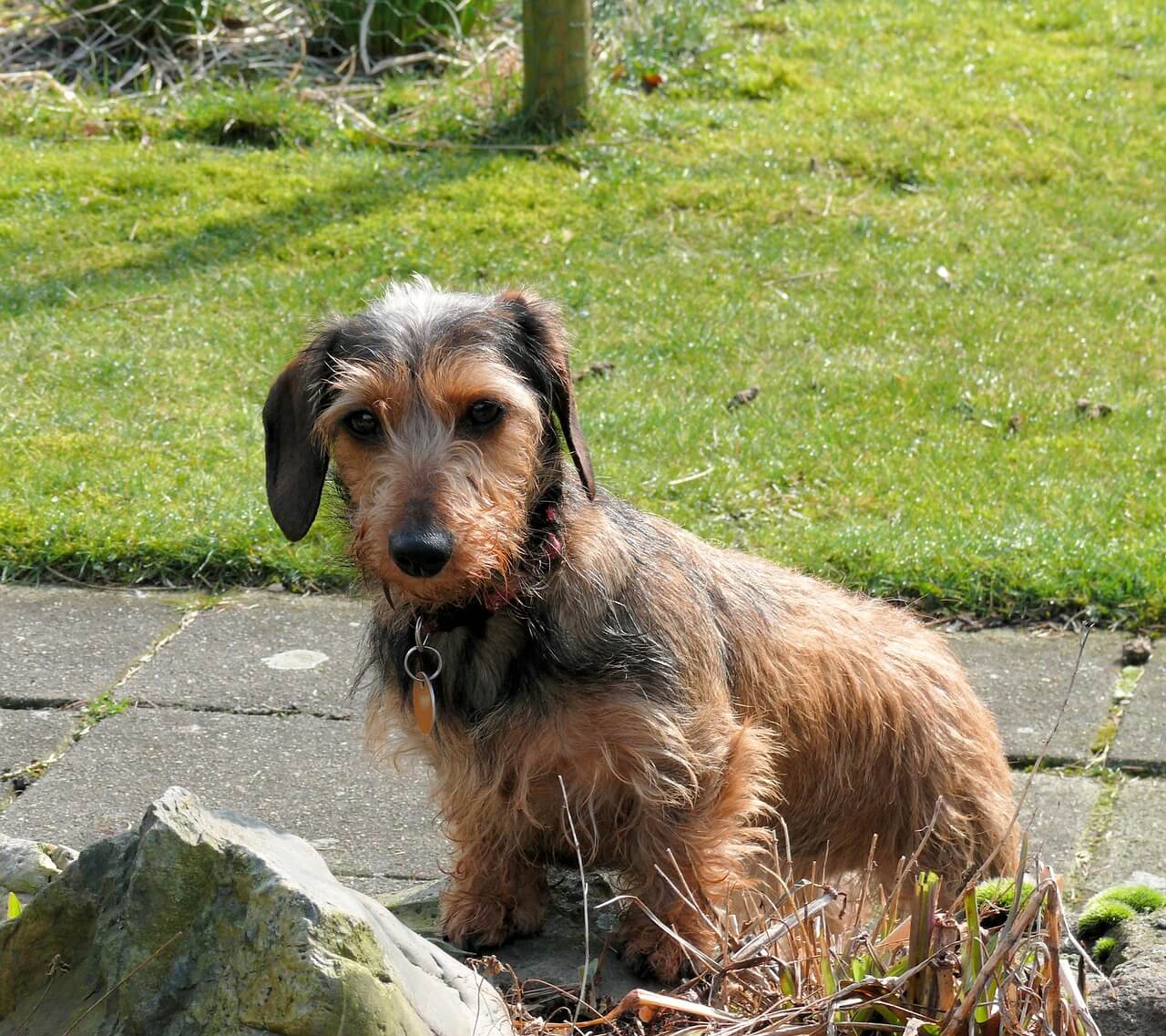
If you’re not ready to exercise patience, consistency, and some love in training your pooch, then do not get a dachshund!
They are stubborn and hard to train. However, with the aforementioned elements, plus much praises when your dog eventually does what you want are a good way to help it become a loyal and loving dog.
Social skills basics
Firstly, ensure your dog begins to mingle with other dogs and people from an early age. Must be remembered that dachshunds have a natural tendency to be aggressive to strangers, and other animals, even larger animals.
For this reason, an early exposure to people and other dogs would go a long way in curbing your little man’s hunter characteristics.
Housebreaking
One of the hardest thing to teach a doxie is indeed housebreaking. However, with consistency, it can be done.
Your dog is supposed to need to use the bathroom within five minutes after eating or waking from a nap. Timing him and taking him to the bathroom is the right way of letting your little man learn that he must always use the bathroom when pressed.
Even if your puppy has some accidents, don’t scold it. However, when it acts right by using the bathroom or showing you signs that it needs to use it, praise it, or hug it.
Finally, try to always take your dog outside after every 3-4 hours to avoid pooping in the home.
Training your miniature dachshund to be obedient
Most folks enrol their barrelled puppy in a doggy kindergarten, and it is one of the best ways to let your dog learn to be obedient.
It will also ensure it learns to interact with other puppies and under an expert’s watch. When your dog does well to obey a command, you must give it lots of treats as rewards.
Also, the “No bark” command should be used when your doxie decides to bark at other pets or your neighbour’s kid or cat. Take it inside the house and say the order “no bark!”
Tackling chewing disasters
On the negative side, doxies likes chewing – a lot, from chair legs to TV cables and others. The best way to keep it from ruining your furniture and other valuables is to distract your weiner.
Placing several of your dog’s chew toys where it can easily find them is your best bet. Even if it decides to go on with chewing your stuff, making a sharp noise when you catch it red-handed will distract and save your furniture for another day.
Miniature dachshund exercise and activity requirements

There is a clashing opinion as to how much activity and exercise your miniature dachshund needs. Because of the fragility of the dachshund’s back and spine, most experts advise that it should not be allowed to carry out strenuous exercises that may add so much weight on the dog’s spine. Plus most do not believe the doxie’s short legs were meant for long-distance running.
Another school of thought agrees that your dog was bred to be an athletic hunter. However, your dachshund needs to be allowed to exercise as much as it can take.
Taking your dog for a 30-minute walk every day when it is still within a year old isn’t a bad idea. One thing is sure; your lapdog wasn’t meant to be sedentary.
As your miniature dachshund gets older, you can increase the duration of the walk to an hour or more when it is two years and above. You can also do research and add some dog exercises to its activity list.
You would be doing your dog a lot of good than harm by letting it involve in these activities.
While the activities help in maintaining its body weight, your doxie will also develop toned muscles to enhance its physique and improve its energy levels.
Exercise and regular activity also benefit the psyche of your dachshund. When your dog is lonely or bored, it will act out some aggression and destructiveness. Stimulating your dog’s mental capacity with activity is bound to keep it happy.
Over-exercising your dog can also be a problem. Poor body development and out-turned feet are demerits of too much exercise on your dog. Although an adult miniature dachshund can endure as much exercise as you give it, it is important to do things in moderation to avoid detrimental results.
Should I Adopt a Miniature Dachshund Puppy?
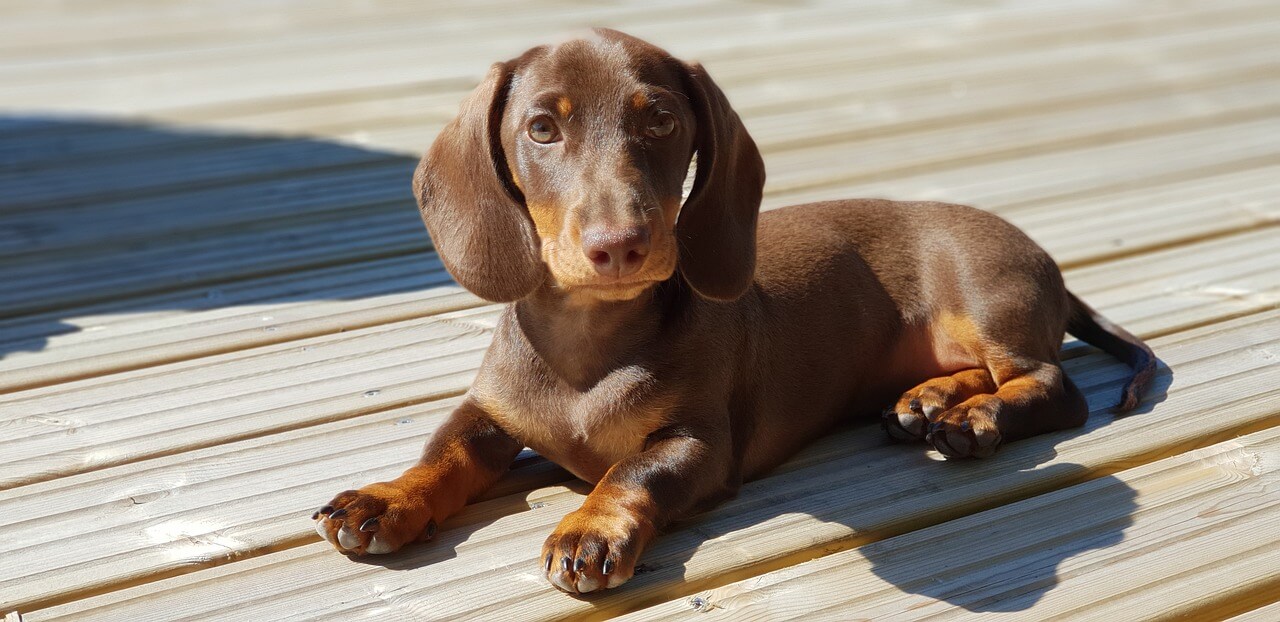
Dachshunds, both standard and miniature, are intelligent and independent dogs. In other words, they like to run things. However, with proper training, your dog will realise that you call the shots.
Another key point is if you treat your dachshund unfairly, it will snap at you – growl or even bark.
Undoubtedly, love and affection are the best ways to win your miniature dachshund’s heart over. While training it, ensure you have a lot of food treats to give it whenever it obeys you or does something right.
Most importantly, avoid scolding or punishment as it may make your dog scared of you.
Then again, trying to pass a particular message to your dachshund might take several weeks or even months, so it is important to be patient and consistent.
Knowing miniature dachshund temperament, health issues and activity requirements is useful in deciding if a miniature dachshund breed is a right dog for you.
Miniature Dachshund: To Summarise
Ever since they were integrated into the American Kennel Club, miniature dachshunds have become a popular breed of dogs in America and the world at large.
Although originally bred by the Germans to hunt, this generation of dachshunds (miniature dachshunds) has retained the fierceness of their ancestors.
Besides being such fierce dogs, miniature dachshunds are loyal and intelligent plus cute too. They can play for a whole day and are excellent guard dogs.
However, they snap when they are lonely or not given enough attention. Their aggression is also transferred to other dog breeds, animals, and even strangers.
It is important to help your miniature dachshund socialise when it is still a puppy so it can have a good relationship with others.
About its health, your dachshund is prone to suffering certain illnesses because of its unique body build. While some of the diseases will affect any dog breed, your dachshund may stand a higher risk of experiencing it.
Your best bet against such diseases is the right nutrition and proper exercise for your dog.
Regardless of its complex nature, a dachshund remains one of the best dog breed choices you can have as a companion.
What is your query about?
What is a miniature dachshund?
Miniature dachshund is a smaller variety of a standard dachshund. The breeders created this type of weiner dog to tackle smaller prey such as rabbits, rats, and other rodent-like animals.
How big do miniature dachshunds get?
An adult miniature dachshund can reach just 5 to 7 inches in height, and 8-11 pounds in weight.
Is my dachshund mini or standard?
You can expect a standard dachshund to stand taller at 8 to 9 inches, and a miniature dachshund to be 5 to 7 inches in height. The standard dachshund weighs between 16 and 32 pounds. Miniature dachshunds typically weigh less than 11 pounds, which is considerably smaller.
Do miniature dachshunds bark al lot?
Dachshunds are known to be loud barkers. However, with the proper training, you can restrict your mini dachshund barking habit.
Are miniature dachshunds aggressive?
Dachshunds, in general, can sometimes develop behavioral issues such as aggressiveness or overprotectiveness.
How long does miniature dachshund live?
Healthy dachshunds, both standard and miniature varieties can enjoy a long lifespan of 12 to 16 years.
How much does miniature dachshund weigh?
According to the United Canine Association, the miniature Dachshund weighs around 8-11 lbs (3.6-5 kg).


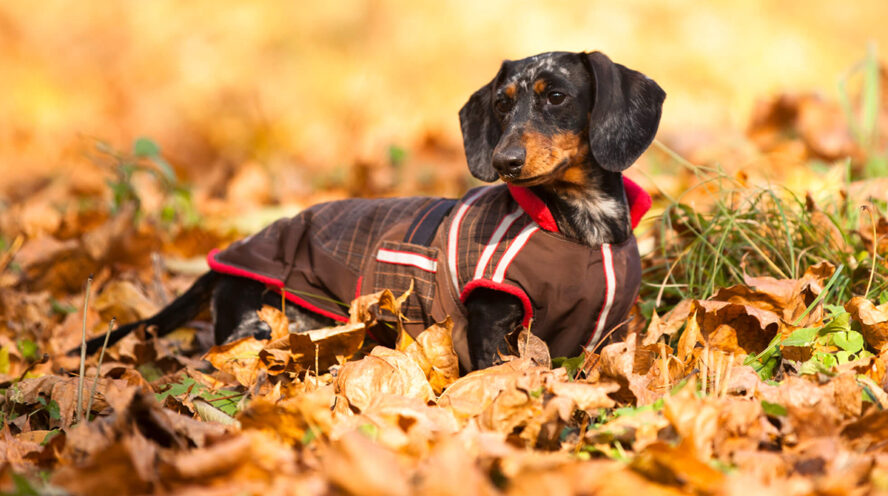
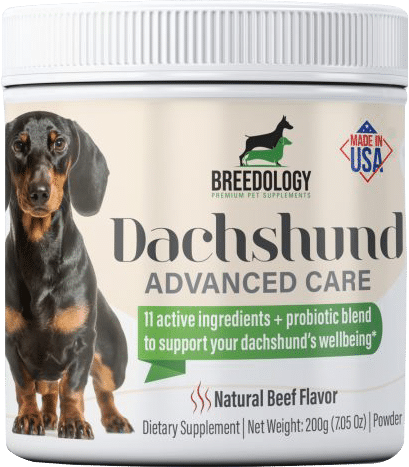
Comments
Try a little hot water with some good kibble. Mix it up and make a gravy.
Try a little hot water with some good kibble. Mix it up and make a gravy.
Any tips on night times for a mini dachshund puppy?
Wonderful! We have a Miniature Long-Haired Doxie. She is 9 months old and just getting out of heat. I am NOT going to breed her. I want her to be older when I have her fixed. She weighs so 7 pounds and is a VERY picky eater. I have been buying the most expensive foods. What do you recommend. We are in our 60’s and I want her to be healthy. I follow the Dog food advisor. Should I make her food? I would be happy to do that. I am so happy for you beautiful blog and look forward to your answer.
Blessings, Linda
Dear Linda,
Fussy eaters usually prefer canned food, it’s tastier and got more moisture content. ( get premium brands if possible)
If she won’t eat,- just leave the food there until she comes back to it. She will not starve herself to death , she will eat eventually when hungry. (considering there is no underlying health reasons affecting her eating behavior)
Thanks I have taken one because owner passed away. She is 2 years old.